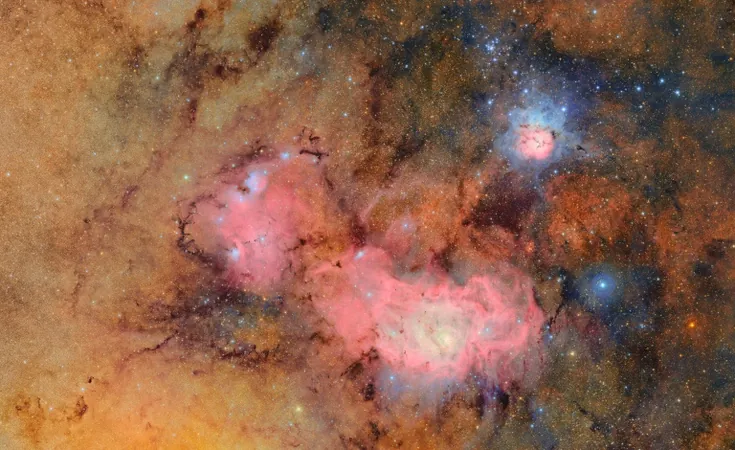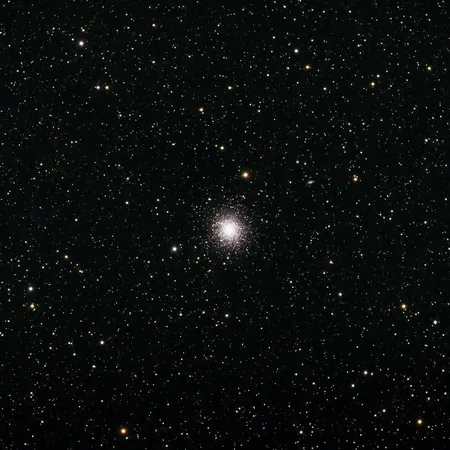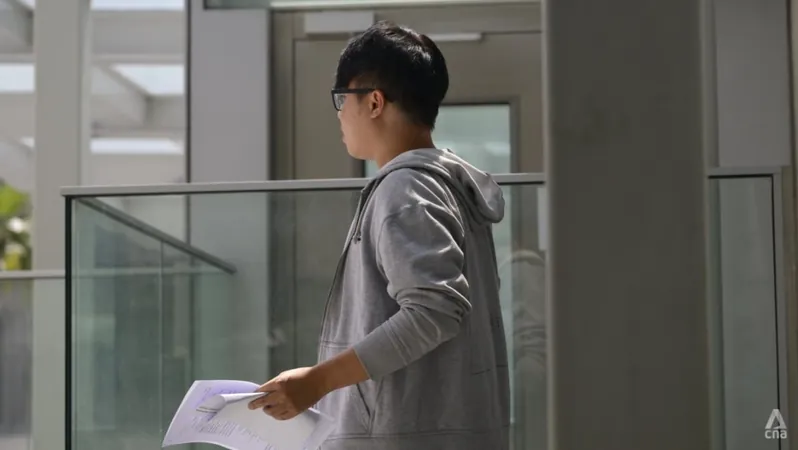
Explore the Cosmos: Stunning First Images from the Vera Rubin Observatory!
2025-06-23
Author: Jia
A Glimpse into the Universe's Wonders
Get ready to be amazed! The Vera C. Rubin Observatory in Chile has unveiled breathtaking first images that showcase the beauty of deep space. From dazzling stellar nurseries to an astonishing array of galaxies and thousands of newly discovered asteroids, the first glimpses from this cutting-edge observatory are nothing short of spectacular.
A Marvel in Astronomy
Nestled atop Cerro Pachon in central Chile, this $800 million telescope has been over two decades in the making. Its unique location, marked by dark skies and dry air, ensures optimal conditions for cosmic observation. One of the standout images released is a stunning composite of 678 exposures taken over seven hours, capturing the majestic Trifid and Lagoon Nebulae. These celestial birthplaces of stars shine vibrantly in hues of pink against a backdrop of deep orange-red.
Transforming Our View of the Universe
Dubbed "The Cosmic Treasure Chest," another image showcases a universe alive with stars and galaxies. Zeljko Ivezic, the director of Rubin construction, describes how the previously empty voids of space transform into glittering tapestries through this incredible telescope. Spiral, elliptical, and clustered galaxies pop with colors like vivid reds, blues, and oranges, offering key insights into their distances and sizes.
Decoding Cosmic Colors
Scientist Federica Bianco clarifies that the colors seen in these images may not match what our eyes perceive. The telescope captures a much broader spectrum of wavelengths, where infrared light translates to red for cooler objects and ultraviolet light to blue, indicating warmer entities.
Engage with the Universe!
For those eager to explore, an interactive version of the image is available on the Rubin Observatory's website. Clare Higgs, education and public outreach lead, invites you to zoom in on galaxies and perhaps be the first to discover a hidden cosmic treasure!
A Giant Step in Astronomical Technology
Equipped with an 8.4-meter telescope and the world's largest digital camera, the observatory is a monumental feat of engineering. The massive camera, comparable in size to a car, captures 3,200-megapixel images—imagine needing 400 ultra-high-definition TVs just to view a single Rubin image at full resolution.
The Legacy Survey of Space and Time Begins!
Later this year, the observatory will launch its flagship project, the Legacy Survey of Space and Time (LSST), aiming to scan the night sky every night for the next decade. This ambitious project will not only track subtle changes in the sky but also focus on dark matter, which Vera C. Rubin famously brought to light. Astonishingly, dark matter and dark energy are thought to comprise 95 percent of the universe, yet their mysteries remain largely unsolved.
Revolutionizing Planetary Defense
This joint initiative by the US National Science Foundation and Department of Energy is also hailed as one of the most powerful tools for defending our planet. In just 10 hours of observation, the Rubin Observatory uncovered 2,104 previously unknown asteroids in our solar system, including seven near-Earth objects, all classified as non-threatening.
Chile: The Observatory's Cosmic Hub
Chile has become a prime location for telescopes from over 30 countries, hosting some of the most sophisticated astronomical instruments in existence, including the mighty ALMA Observatory. This nation has been pivotal in groundbreaking discoveries, such as the acceleration of the universe's expansion—a feat that earned the Nobel Prize in Physics in 2011. Furthermore, the Extremely Large Telescope is set to begin operations in 2027, promising to uncover even more cosmic truths.



 Brasil (PT)
Brasil (PT)
 Canada (EN)
Canada (EN)
 Chile (ES)
Chile (ES)
 Česko (CS)
Česko (CS)
 대한민국 (KO)
대한민국 (KO)
 España (ES)
España (ES)
 France (FR)
France (FR)
 Hong Kong (EN)
Hong Kong (EN)
 Italia (IT)
Italia (IT)
 日本 (JA)
日本 (JA)
 Magyarország (HU)
Magyarország (HU)
 Norge (NO)
Norge (NO)
 Polska (PL)
Polska (PL)
 Schweiz (DE)
Schweiz (DE)
 Singapore (EN)
Singapore (EN)
 Sverige (SV)
Sverige (SV)
 Suomi (FI)
Suomi (FI)
 Türkiye (TR)
Türkiye (TR)
 الإمارات العربية المتحدة (AR)
الإمارات العربية المتحدة (AR)